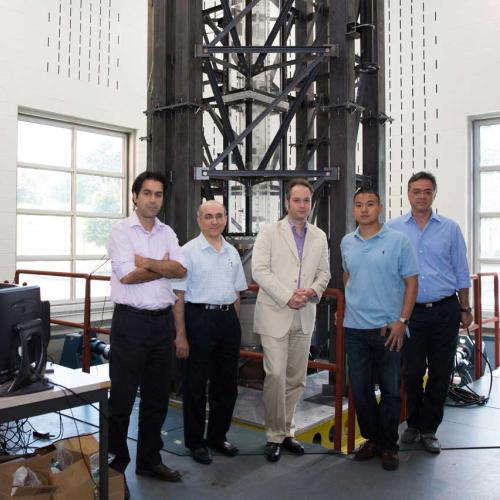Infrastructure Safety Engineering
Researchers in the Earthquake Engineering and Structures Laboratory study buildings, bridges, power plants and other infrastructure systems to advance state-of-the art safety and stability methods for use by civil and mechanical engineers.
Earthquake Simulator
The laboratory includes the “Shake Table,” one of the most powerful earthquake simulators on the East Coast. The Shake Table produces every motion that a building or structure may experience during an earthquake, allowing it to simulate the most severe earthquakes recorded worldwide over the last 100 years.
Investigators Study Earthquake Resilience of Constructed Facilities
GW researchers lead the way in international efforts to better understand the behavior of nuclear reactors during seismic activity.
News
Remembering Fukushima: Unique GW Model Improves Understanding of Nuclear Reactor Behavior during Earthquakes
GW's research team is leading the way to new discoveries about the behavior of nuclear reactor cores during earthquakes.
GW Researchers Build Model to Better Understand Nuclear Reactor Behavior during Earthquakes
Imagine the scene. A 9.0 earthquake hit Japan’s Fukushima Daiichi nuclear power plant in March 2011 and triggered a tsunami with 46-foot high waves. The seawall was overwhelmed and three of its six nuclear reactors melted down due to the loss of electrical power from the flooding, resulting in the largest nuclear incident since Chernobyl. The disaster sparked new interest in the behavior of nuclear reactor cores during earthquakes, leading to an international interdisciplinary research project.
$860K Grant to Study the Effects Earthquakes Have on Nuclear Reactor Cores
Faculty will study the effects earthquakes have on nuclear reactor cores by devising a model for simulating the impact of fuel rod vibrations inside a nuclear reactor. The findings of the research iwll have implications for nuclear reactor construction and analysis well into the future.




